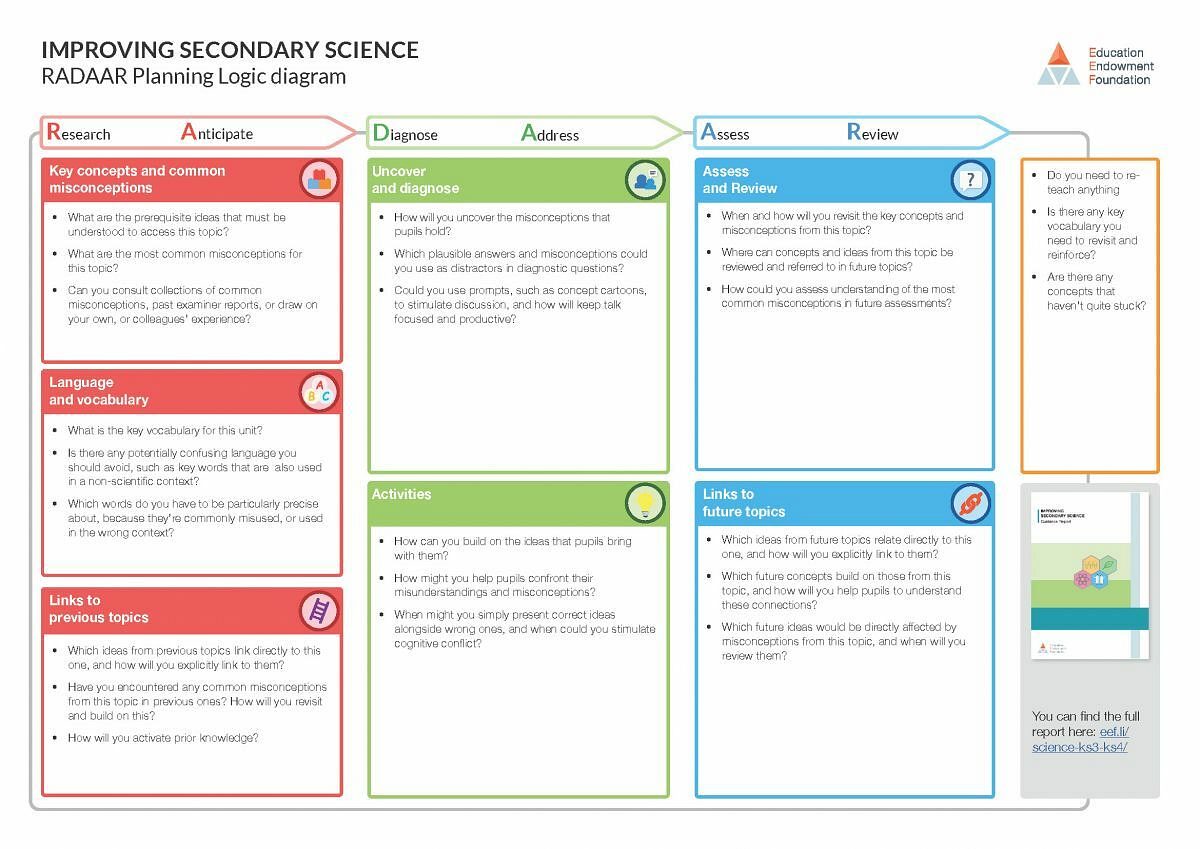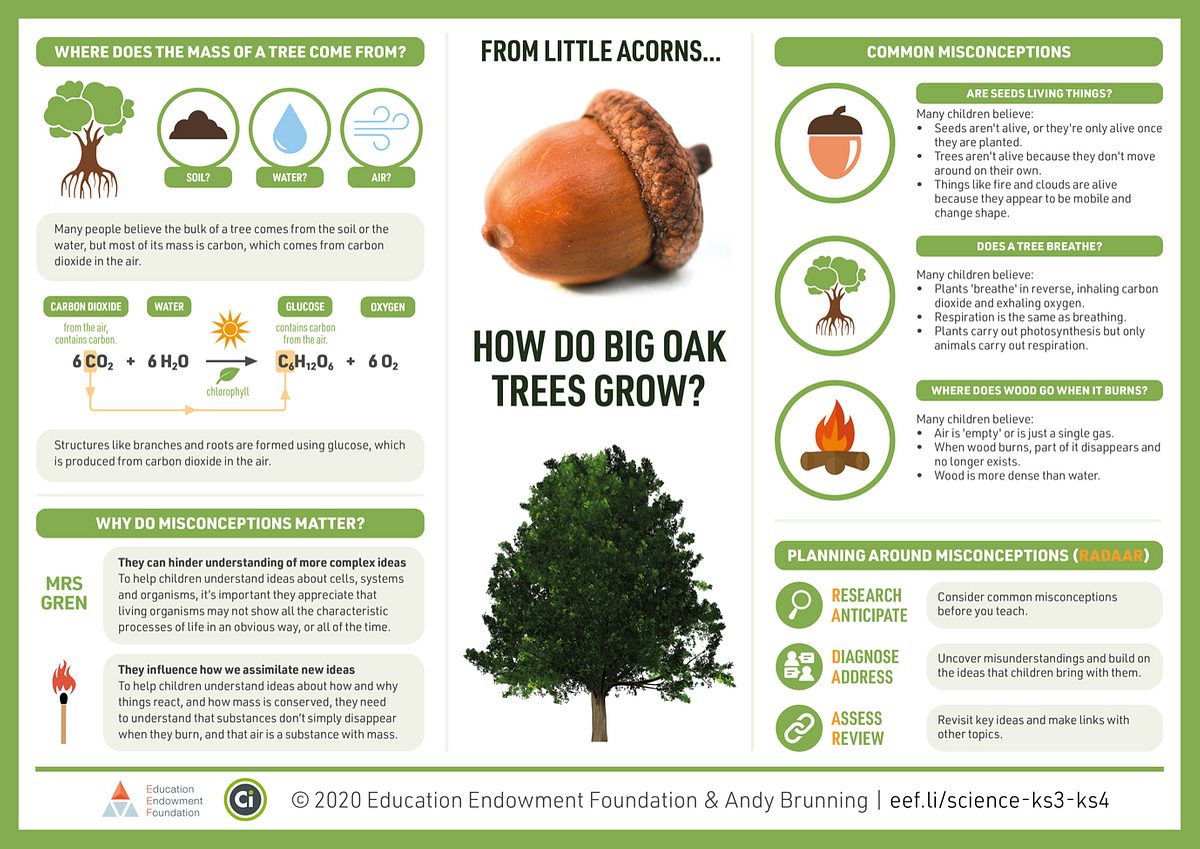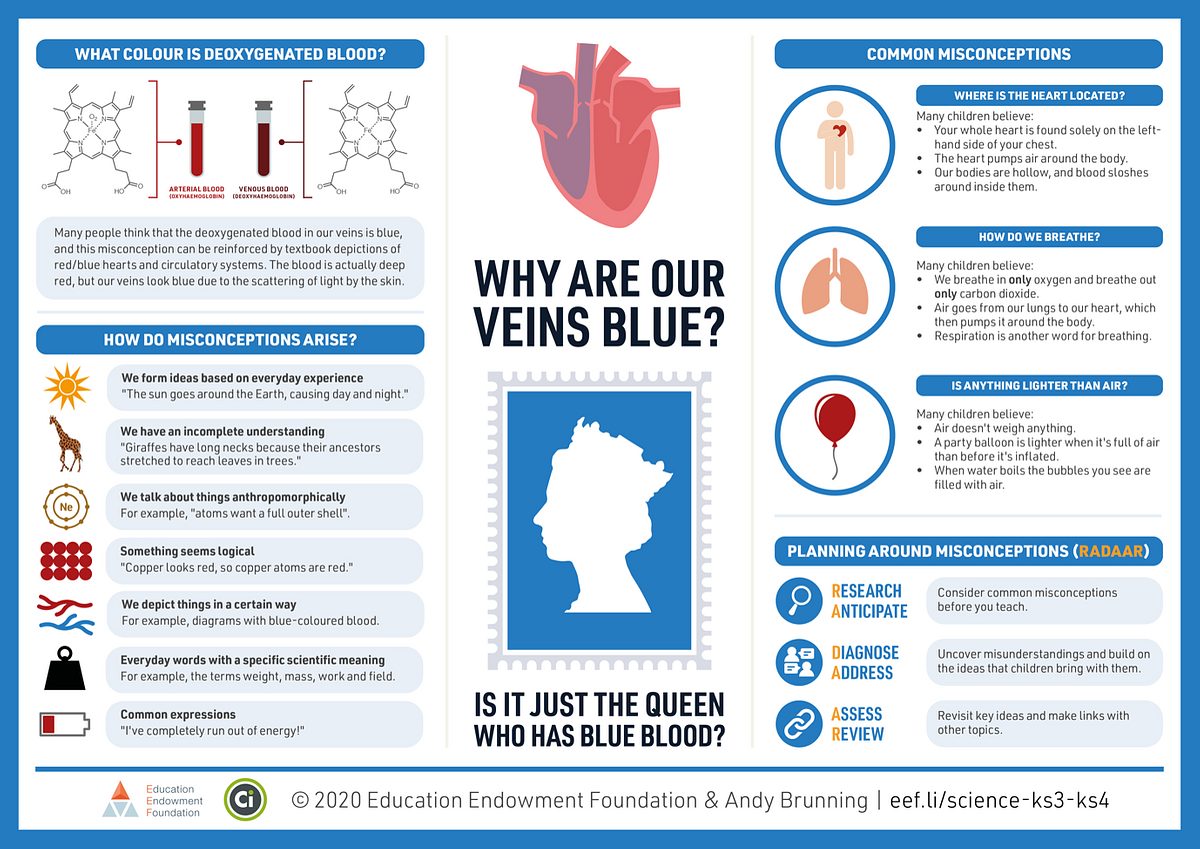Bradford Research School: Preconceptions in science: using the RADAAR approach
Posted 5th October 2023
Mark Miller is Director of Bradford Research School
Before our pupils enter our science classrooms, they have developed their own understanding of how the world works. From the way the sun moves in the sky, to the leaves that fall from trees, they are building new knowledge and slotting it all together. Often, they can build a rich knowledge that can be helpful for teachers to build on.
And sometimes they get it wrong.
Pine et al (2001) surveyed a number of primary teachers about pupils’ misconceptions in science, and heard of examples such as these around height:
Children were frequently reported to believe that height is dependent on age, so that taller people must be older than shorter people. Another belief is that all men are taller than women or that a person gets bigger on their birthday.
Recommendation 1 of the EEF’s Improving Secondary Science guidance report asks us to ‘Build on the ideas that pupils bring to lessons’.
Preconceptions are not always problematic as they may often align with scientific understanding. It is important that we can understand the preconceptions that our pupils are likely to have and build on them; equally important is to foresee and diagnose misconceptions which hinder pupils’ understanding of science.
The RADAAR approach
The EEF have developed the RADAAR planning framework to manage pre and misconceptions in science.
- Research
- Anticipate
- Diagnose
- Address
- Assess
- Review
You can read more about the RADAAR approach in this blog from Niki Kaiser, Director of Norwich Research School.

There are also worked examples:
How do big oak trees grow?
Why are our veins blue?


Hinge questions to elicit understanding
A good way to understand whether a misconception exists is to provide a hinge question. A well designed multiple choice question can give you really useful information about why something is misunderstood. When we know the possible areas of misconception, these become easier to design. Harry Fletcher-Wood gives this definition for a hinge question:
A check for understanding at a ‘hinge-point’ in a lesson, so-called because of two inter-linked meanings:
1) It is the point where you move from one key idea/activity/point on to another.
2) Understanding the content before the hinge is a prerequisite for the next chunk of learning.
Here is an example of a hinge question from the AAAS:
Why does liquid water take the shape of a cup it is poured into, but solid ice cubes do not?
A: Because the molecules of liquid water are softer than the molecules of solid ice
B: Because the molecules of liquid water are smaller than the molecules of solid ice
C: Because the molecules of liquid water are moving but the molecules of solid ice are not
D: Because the molecules of liquid water can easily move past one another but the molecules of solid ice cannot
Each wrong answer indicates something about the nature of the misconception.
For further reading, we would recommend Damien Benney’s blog post on hinge questions.
Karen Pine , David Messer & Kate St. John (2001) Children’s Misconceptions
in Primary Science: A Survey of teachers’ views, Research in Science & Technological Education